Guangxi Zhuang Autonomous Region in southern China, where I live, is sugar central for the country. Over two-thirds of China's output of sugar is grown right here, making it one of the largest sugar production areas on the planet. I have a second home in the countryside and it is surrounded by sugar cane fields.
Much of this is produced by small time farmers, although huge Chinese and international companies have also moved in.
Also, sugar is used extensively in Chinese cooking, not only as a sweetener, but more as a spice. A little added to a savoury dish can bring out otherwise hidden flavours. It also has medicinal attributes according to traditional Chinese medicine.
Supermarkets have what was to me, on first sight, a huge range of sugars, some almost unrecognisable. Here is a brief introduction to some of them. Most sugar is sold loose, although corner shops and mom 'n pop stores may have pre-packed bags. These are often labelled in English as "candy", the Chinese language not differentiating between "sugar" and "candy" - always a source of confusion. Both are 糖 (táng),
IMPORTANT NOTE: The Chinese names given here and in the images are the names most used locally. They are all Mandarin Chinese, but it is still possible that other names may be used elsewhere in China. Certainly, non-Mandarin speaking areas will be different.
By the far the simplest way to get your sugar ration is to buy the unprocessed sugar cane. This is not usually available in supermarkets but is a street vendor speciality. In the countryside, you can buy it at the roadside. There are also people in markets etc with portable juice extractors who will sell you a cup of pure sugar cane juice.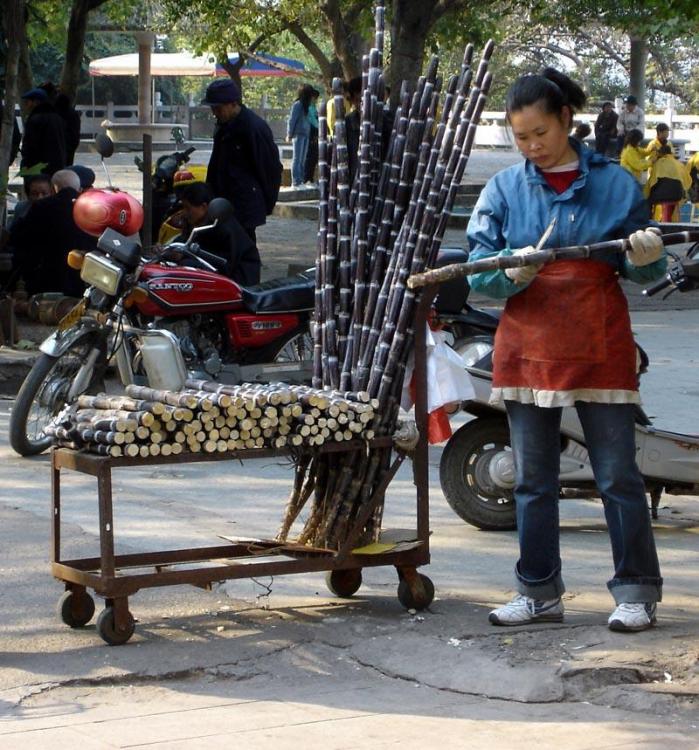
I remember being baffled then amused when, soon after I first arrived in China, someone asked me if I wanted some 甘蔗 (gān zhè). It sounded exactly like 'ganja' or cannabis. No such luck! 甘蔗 (gān zhè) is 'sugar cane'.
The most common sugar in the supermarkets seems to be 冰糖 (bīng táng) which literally means 'ice 'sugar' and is what we tend to call 'rock sugar' or 'crystal sugar'. This highly refined sugar comes in various lump sizes although the price remains the same no matter if the pieces are large or small. Around ¥7/500g. That pictured below features the smaller end of the range.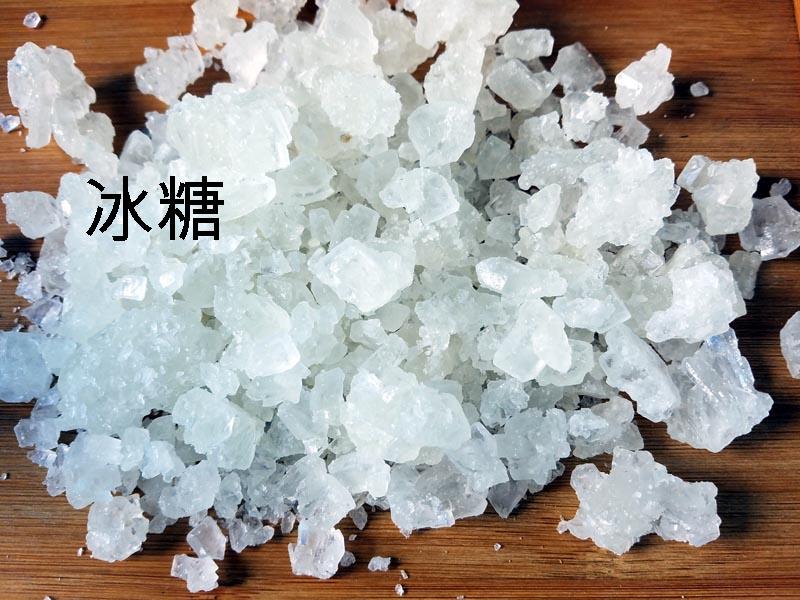
Related to this is what is known as 冰片糖 (bīng piàn táng) which literally means "ice slice sugar". This is usually slightly less processed (although I have seen a white version, but not recently) and is usually a pale brown to yellow colour. This may be from unprocessed cane sugar extract, but is often white sugar coloured and flavoured with added molasses. It is also sometimes called 黄片糖 (huáng piàn táng) or "yellow slice sugar". ¥6.20/500g.
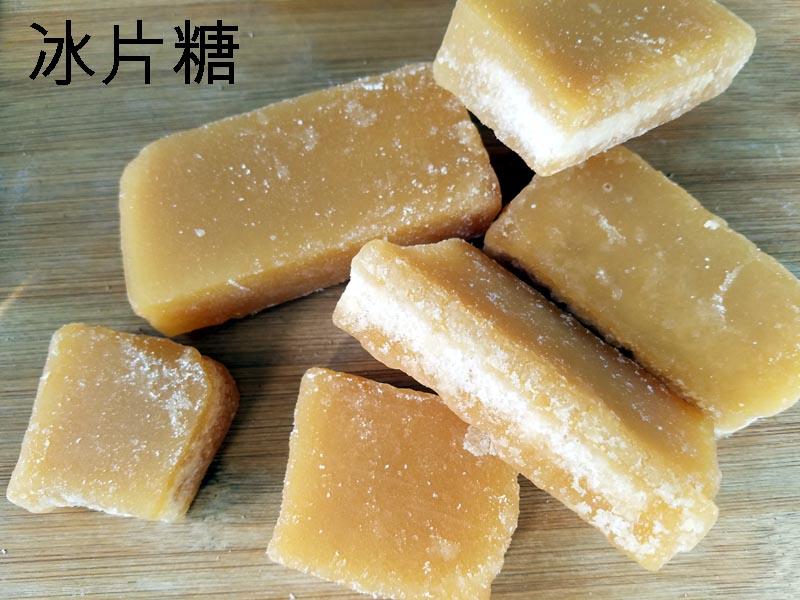
A less refined, much darker version is known as 红片糖 (hóng piàn táng), literally 'red slice sugar'. (Chinese seems to classify colours differently - what we know as 'black tea' is 'red tea' here. ¥7.20/500g.
Of course, what we probably think of as regular sugar, granulated sugar is also available. Known as 白砂糖 (bái shā táng), literally "white sand sugar', it is the cheapest at ¥3.88/500g.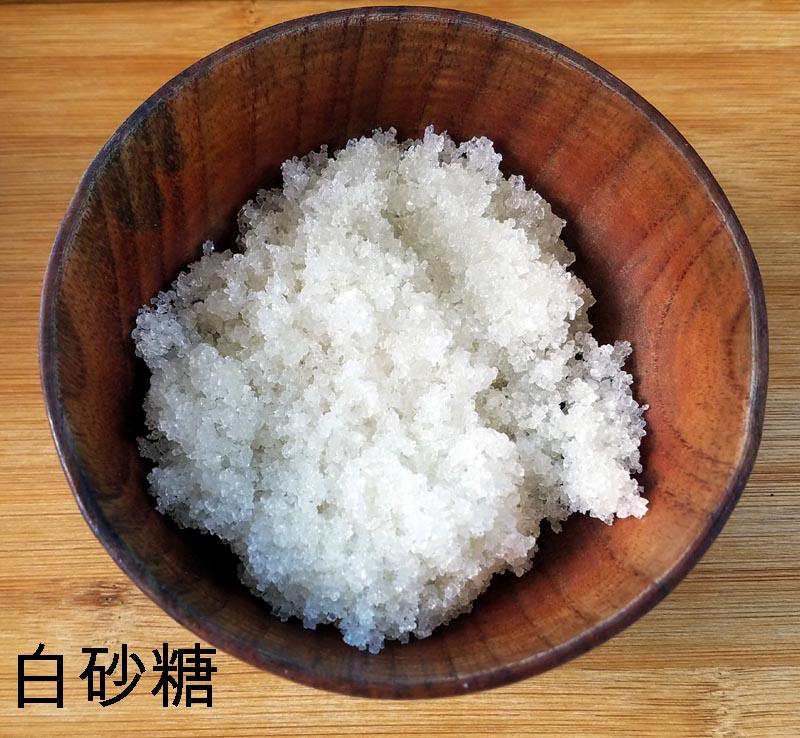
A brown powdered sugar is also common, but again, in Chinese, it isn't brown. It's red and simply known as 红糖 (hóng táng). ¥7.70/500g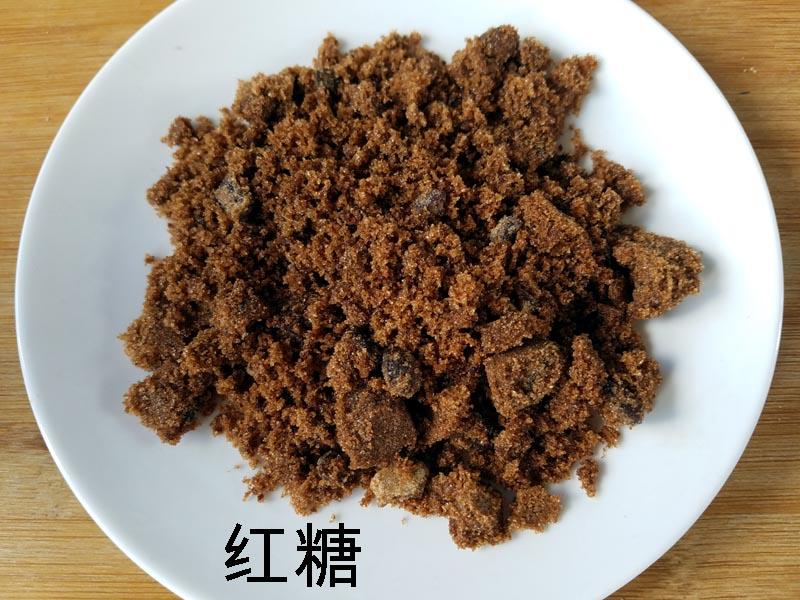
Enough sweetness and light for now. More to come tomorrow.



